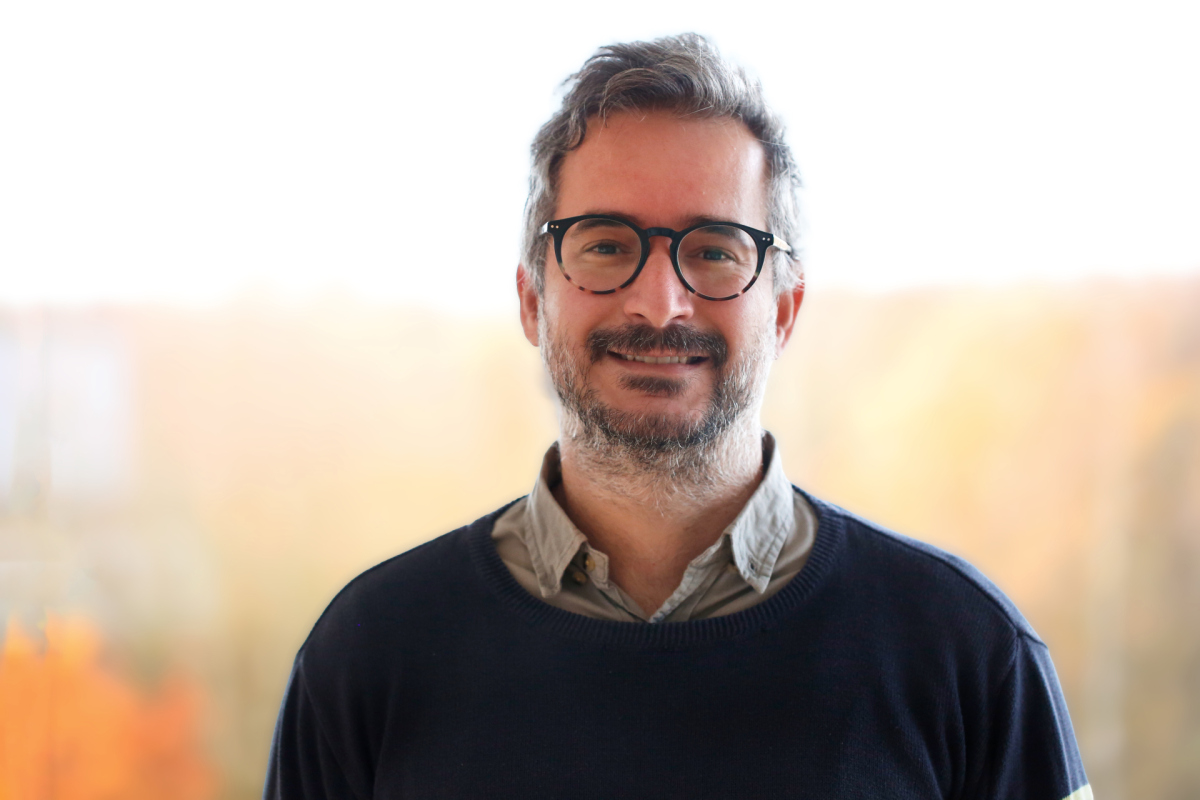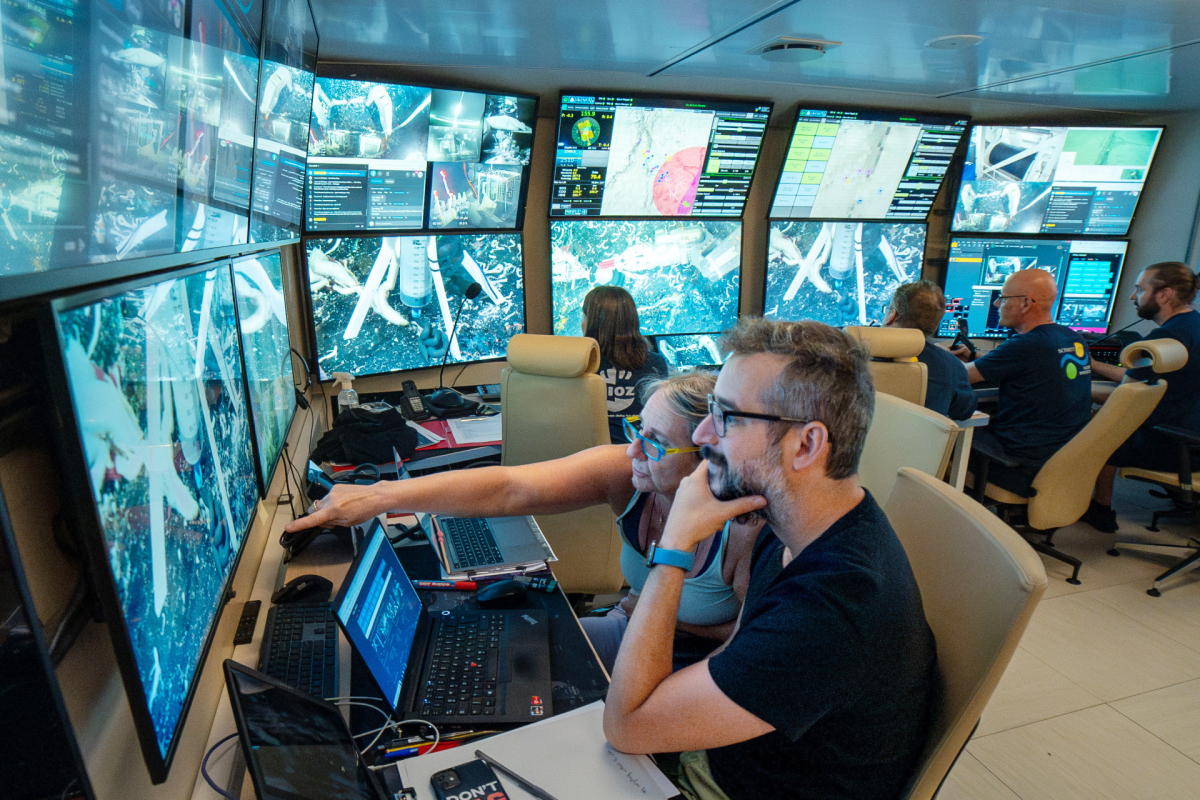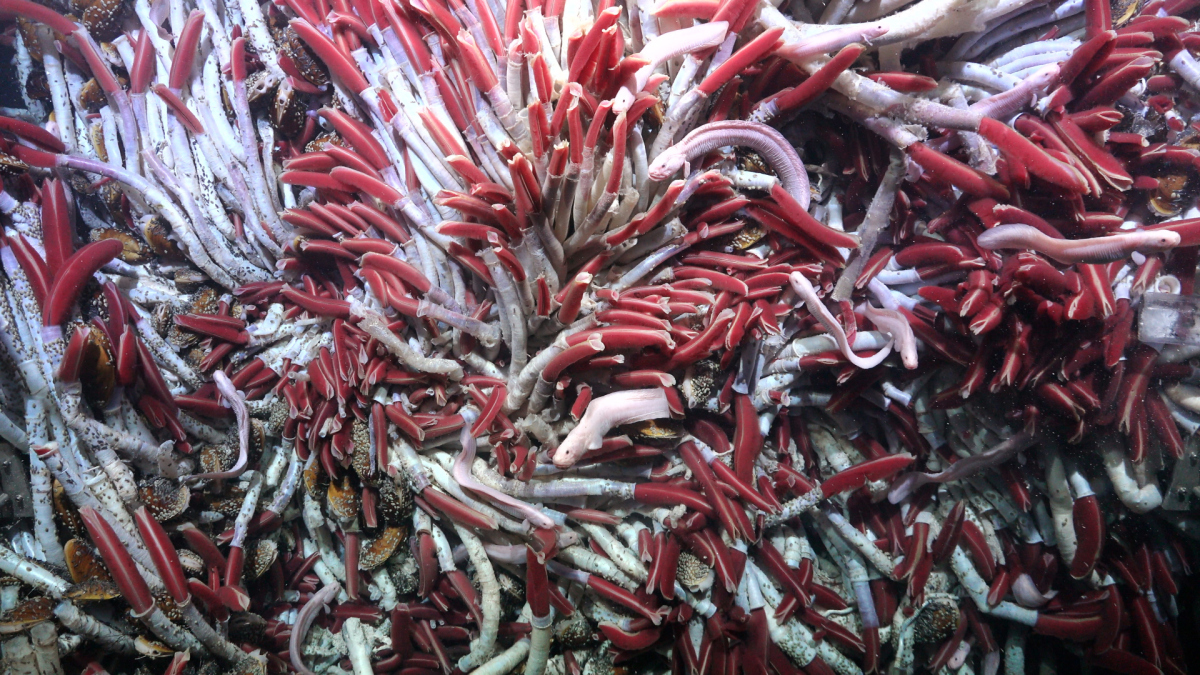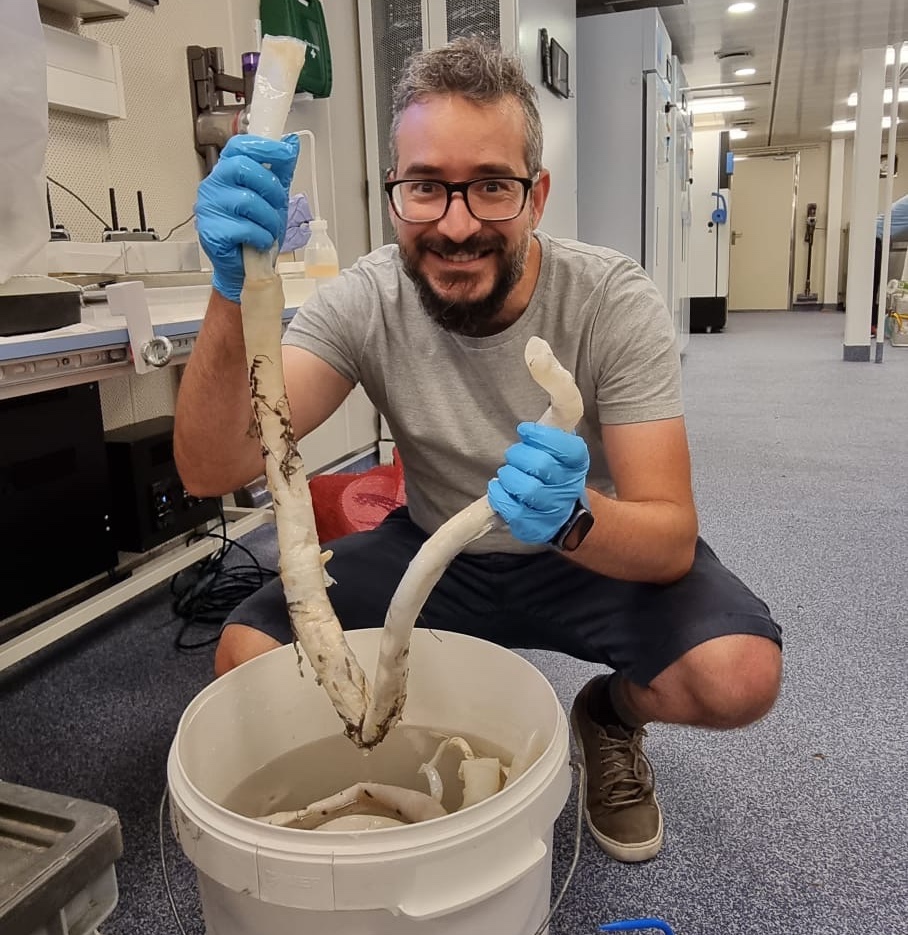- Press Office
- Press releases
- Animal life beneath the seafloor
Secret life underground: Animal life beneath the seafloor
Hydrothermal vents have long been known to be thriving with animal life, which is mostly based on the support of chemosynthetic symbiotic bacteria supplying the animals with what they need to live. On a cruise to the East Pacific Rise, scientists around Monika Bright from the University of Vienna, Austria, and Sabine Gollner from the Royal Netherlands Institute for Sea Research (NIOZ) have discovered that animals of all sizes also live hidden beneath the bottom of the ocean: Underneath the seafloor around hydrothermal vents, they discovered cave systems teeming with worms, snails, and chemosynthetic bacteria. Their findings are now published in the journal Nature Communications.
“This is quite a revolutionary discovery”, says André Luiz de Oliveira from the Max Planck Institute for Marine Microbiology in Bremen, Germany, who joined the cruise on Schmidt Ocean Institute’s research vessel R/V Falkor (too) in July 2023. “Finding these large animals beneath the seafloor was not only super exciting, but it also shows that the inhabitants of the seafloor and the subseafloor are tightly connected. Moreover, it suggests that the larvae of these animals disperse through the subseafloor – which has been long suspected but never systematically investigated and proven.”
De Oliveira, a biologist who has long been working in bioinformatics, joined the cruise as a data scientist. The research was carried out with the help of the submersible ROV SuBastian from Schmidt Ocean Institute, which recorded each dive, took samples and carried out experiments. “Every planned dive – 18 dives in total – of the submersible generated up to four Terabytes of data in the form of videos, pictures, samples, tables, and so on. It was my job was to sort and organise all of this to facilitate the subsequent work of the scientists”, de Oliveira says. “I worked very closely with Monika, Sabine and the other researchers, as well as the marine technicians, to set up a customisable web interface.” Gathering and organising all the collected information in a straightforward manner and connecting it to experiments and analyses onboard enabled the scientists to access the relevant data quickly and efficiently. “We were surrounded by water but drowning in data. My work made it relatively easier for the scientists to navigate in the sea of data that was produced every day and make sense of their experiments.”
As the scientists state in their publication, “the discovery of animal life beneath the surface of the Earth’s crust raises questions concerning the extent of these ecosystems, which is larger than what can be seen on the seafloor surface. The study of the subseafloor biosphere for animal life has just begun.” The results now available will allow to better understand the functioning of these fascinating and complex ecosystems as well as their role in global biodiversity and geochemical cycling. Thus, their publication also highlights the urgency for protection against potential future anthropogenic impact, the authors stress. “This discovery underlines how many secrets still hide in the inaccessible deep sea and how important it is to take good care of these ecosystems”, concludes de Oliveira.
Original publication
DOI: 10.1038/s41467-024-52631-9
https://www.nature.com/articles/s41467-024-52631-9
Participating institutions
University of Vienna, Department of Functional and Evolutionary Ecology, Djerassiplatz 1, 1030 Vienna, Austria
Royal Netherlands Institute for Sea Research (NIOZ), Landsdiep 4, 1797 SZ 't Horntje, Texel, The Netherlands
Max-Planck Institute for Marine Microbiology Bremen, Celsiusstraße 1, 28359, Germany
Biology Department, Woods Hole Oceanographic Institution, Mail stop 52, 266 Woods Hole Road, Woods Hole, MA 02543, USA
MIT-WHOI Joint Program in Oceanography/Applied Ocean Science & Engineering, Cambridge and Woods Hole, MA, USA
Harvard University, Department of Organismic and Evolutionary Biology, Cambridge, MA, 02138, USA
UMR 8222 LECOB, CNRS-Sorbonne Université, Observatoire Océanologique de Banyuls, 66650 Banyuls-sur-Mer, France
Marine Biology Station Piran, National Institute of Biology, Fornače 41, 6330 Piran, Slovenia
University of Costa Rica, School of Biology, 11501 San Pedro, San José, Costa Rica
University of Vienna, Department of Palaeontology, Josef-Holaubek-Platz 2, 1090 Vienna, Austria
Schmidt Ocean Institute, 555 Bryant Street 374, Palo Alto, CA 94301, USA
More information by the Schmidt Ocean Institute
Contact
Scientist
MPI for Marine Microbiology
Celsiusstr. 1
D-28359 Bremen
Germany
|
Room: |
3243 |
|
Phone: |

Head of Press & Communications
MPI for Marine Microbiology
Celsiusstr. 1
D-28359 Bremen
Germany
|
Room: |
1345 |
|
Phone: |




